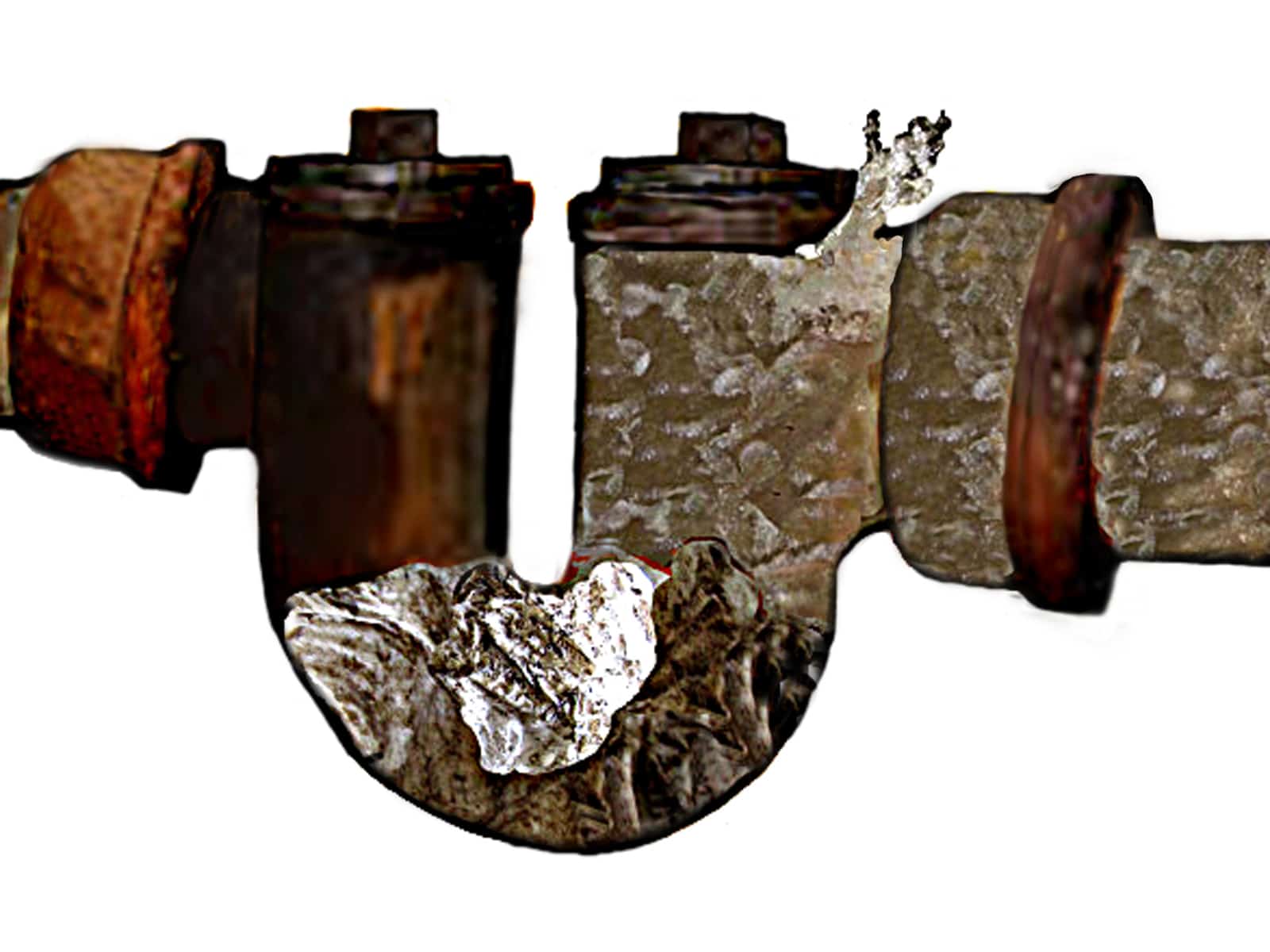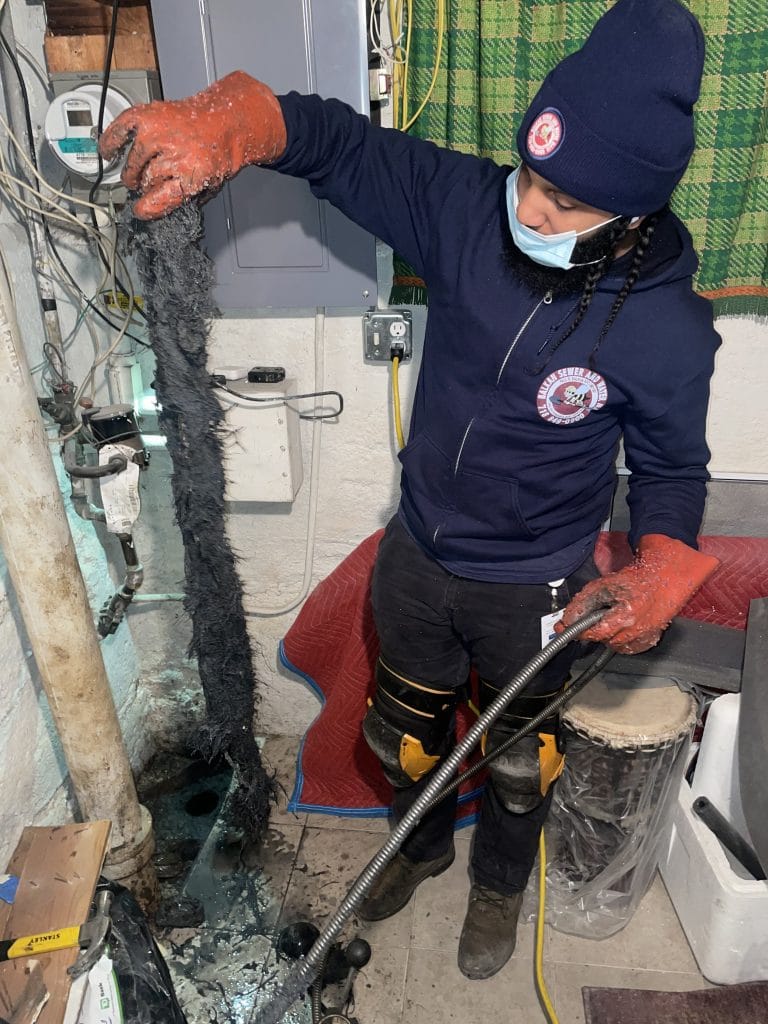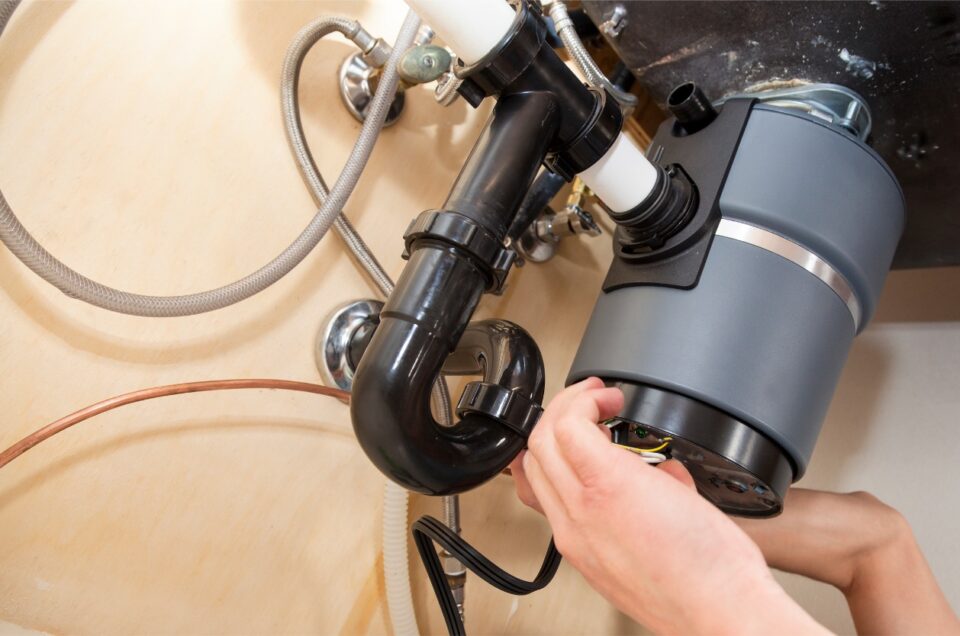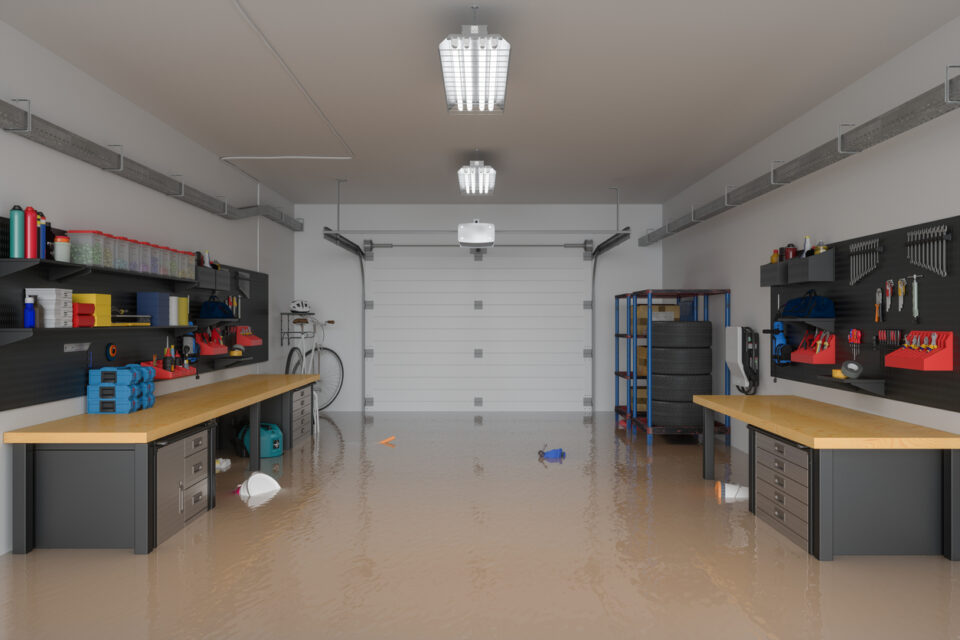Handling a sewer line clog first involves having some basic knowledge about your drain system. All household branch line drains meet at the main house drain. The house drain then connects to a house trap, then to the main sewer line. The main home sewer line, also referred to as the house sewer, then carries the wastewater from inside the house to the city sewer.
Similar to any smaller drain pipe, the main sewer line is not invulnerable to clogging due to accumulation of grease, invasion of tree roots, pipe defects, and having inappropriate objects or materials placed into it.
As required by code in most municipalities, the main sewer has U-bend trap, or commonly referred to as house trap, to prevent city sewer gases and odors from entering the house. The house trap also acts to collect unsuitable objects or articles from entering into your main house sewer line.
How to recognize the symptoms of a sewer line clog?
A main sewer line can be considered the pipe that channels all wastewater from the house to the city sewer, while all other drain pipes are the secondary lines. For example, bathroom or kitchen sinks are considered secondary or branch line drains. If there is any clog in the secondary line, the problem will be isolated in that particular area. Meaning that a blockage in a kitchen sink will not prevent your toilet from draining properly.
When the blockage happens in the main sewer line, all wastewater running through the house will not leave the property, but it will surface at the lowest point of the drainage system. That means that a sewer line clog can surface out of a basement toilet, sink, or shower, but not be the location of the clog issue.
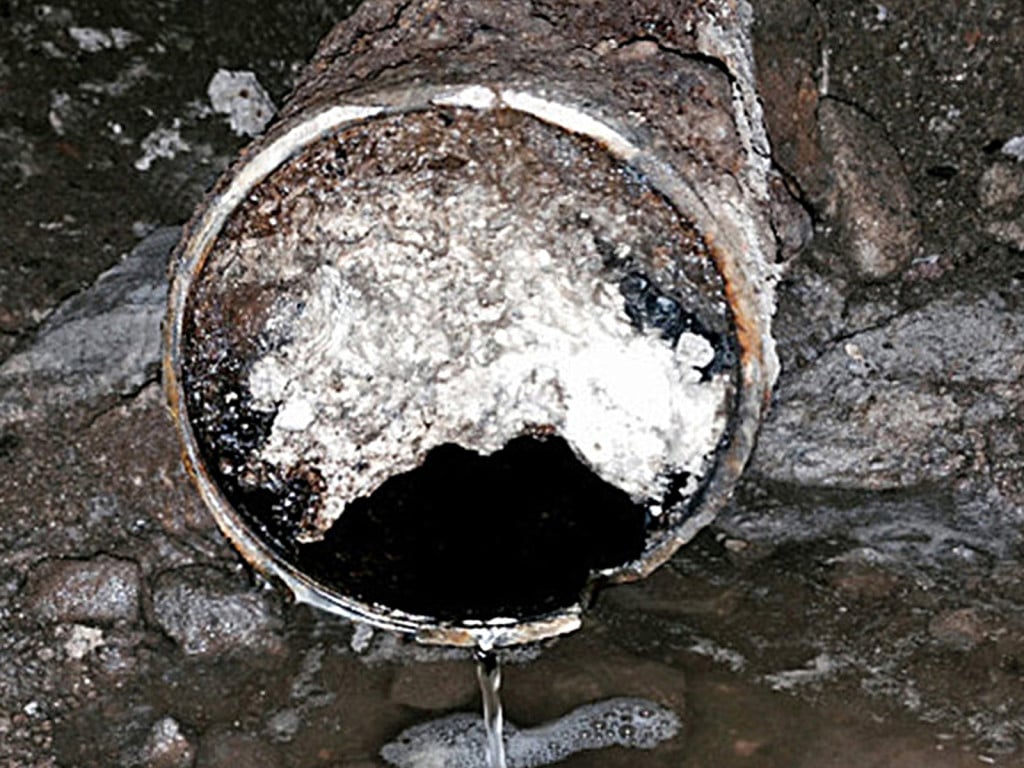
Diagnosing the point of a clog can be confusing
When you have a sewer line clog, understanding the actual point of the clog inside your pipes can be confusing. Frequently where the wastewater surfaces is not the point of the clog, is it simply the point of least resistance, or the lowest point in the pipe system.
Water will seek the easiest outlet when a main sewer line clog occurs, as water seeks its own level. That is why it is so very important when you suspect a sewer line clog, not to open the house trap yourself. It can result in getting inundated with foul wastewater. For instance, water backing up from a sink or shower could very well be from a clog on a main drain line further down the run of the pipe.
If you have any of the above conditions, a number of slow-running drains, or a general foul sewer smell, you may be suffering from a main sewer clog. These types of symptoms are best left for a professional to check out and diagnose.
Common Causes of Main Sewer Line Clog Issues
There can be main causes of a line sewer clog. Three of the most common causes are discussed with possible solutions below.
A blocked or clogged house trap
If you are fortunate, one of the most common and easily corrected causes of a main sewer line clog is a blocked house trap. A house trap is a specialty fitting, shaped like the letter U to prevent odors from the city sewer line.
Water acts as a natural barrier, blocking gases from escaping, and preventing them from entering your house. The shape is very similar to that of the curved pipe that sits beneath a sink, but a house trap is much larger and is attached to the main sewer.
If clumps of paper, wet wipes, or other objects get caught in the belly of a house trap, your entire drain system will cease to function. It is typically not a good idea for a homeowner to investigate whether a house trap stoppage exists or not.
An unskilled person opening a house trap can result in foul waste water inundating the area. If the cause of the backup is a blocked public sewer, the amount of waste can be quite substantial.
• Proper investigation: The first step before opening a main sewer trap is to verify that the public sewer is not backed up. A professional would open the cover on the public sewer to make sure it is flowing.
• Which side of the trap to open: Always open the street side clean out on the trap first. If there is a trap stoppage, this will allow an outlet for the backed-up wastewater to escape after the house-side trap plug is removed.
• After the backed-up wastewater runs out: The stoppage in the bottom of the trap must be removed. This can be a messy and undesirable task for most people. Long-length rubber gloves should be worn.
Cleaning out a house trap frequently requires hand work – physically removing the stoppage by hand. It is frequently not a good idea to allow the stoppage to be introduced into the main sewer line. There is usually a very good reason the object got caught inside the trap.
Root infestation
While many things can create a blockage in the main sewer line. One of the most common issues is tree root invasion because the main sewer line is located underground outside the house where you may have a number of trees. A sewer pipe is a good source of water, nutrients, and oxygen for plants. Plant and tree roots are continuously growing to find nutrients for themselves.
When roots find even a tiny leak or crack in the main sewer line, they will try to get into the small hole and succeed in most cases. Once inside, the roots continue to grow and can fill the entire width of the pipe. If this happens, you have some options to get rid of the roots:
• Mechanical Auger: Root removal with a mechanical auger is quite simple. It requires a powered auger which is sent down to the main sewer line to cut roots with a rotating spiral blade. Unlike its smaller counterpart, a powered auger has spiral blades equipped with teeth, so it rotates much like saw blades.
The rotating motion is powerful enough to cut many tree roots and solve your problem. The remains of the roots are left inside the sewer line, but you can easily flush them with a flow of water. Mechanical augers remove the roots, but they do not permanently prevent roots from growing back.
• Chemical Compounds: Copper sulfate crystals are the most common chemical-based compounds to prevent tree roots from invading main sewer lines. By introducing the crystals into the main sewer line, the compound will be poisonous to roots. Such poison zones keep tree roots away, yet do not harm plants or trees.
• Hydro Jet: It is a potentially expensive way to clear tree roots. The hydro-jet, or water jet machine, uses a high-powered pump capable of flushing water at up to 4,000 psi with a flow rate of 18 gallons per minute. A water hose is small enough to enter the sewer line and is quite capable of stretching as long as 500 feet without a reduction in pressure and flow rate.
The benefits of a sewer hydrojet
A Hydro Jet can use a wide variety of nozzles, allowing for different water flow directions. Some nozzles can spin to flush not only everything in front of it but also around it inside the sewer pipe. It is capable of spinning at about 20,000 to 50,000 rpm. Some parts of the roots may still be present after a hydrojet treatment, but you can apply a chemical treatment to flush it afterward.
Fat, oil, or grease stoppages
Accumulation of FOG (Fat, Oil, and Grease) is often the culprit of pipe clogging, not only in the secondary lines but also in a main sewer. A blockage in a secondary line can usually be easily removed by using a home-grade auger, but you usually need a heavy-duty drain machine to deal with more stubborn clogging in a main sewer line.
The accumulation of FOG is carried by multiple secondary lines, and therefore you should expect more difficult situations. The very best way to get rid of the grease blockage is to utilize a hydro jet and degreasing nozzle.
• Although it is acceptable to use the same type of high-powered hydro jet, there is a different type of nozzle for removing FOG. Every nozzle can spray high-pressure water, but a professional will be able to determine the most appropriate nozzle for a FOG condition.
The same thing can be said for a mechanical auger; for root problems and FOG problems, different attachments must be used. A drain auger with the right attachment, and in trained hands, can be helpful as well. For removing FOG, the attachment can whip through FOG and push it down and out from the main sewer line.
• After the grease is removed, it is up to you to keep your sewer line FOG-free. All drains in the house are connected to the main sewer line, so you have to be careful with everything you flush in the kitchen or bathroom sink.
The good thing is you can control the amount of FOG you introduce into the drain system. Keeping the sewer line clear by flushing a chemical drain cleaning solution and hot water on occasion may also become part of your drain maintenance plan.
A main sewer line clog from a cracked or misaligned pipe
In some houses, as stated previously, a clog in the main sewer line can start with house a trap blockage. To see if a blockage is in the house trap, it is advised you call a professional. In a worst-case scenario, a main sewer line clog cost will involve a sewer dig to do a sewer repair or a replacement.
To investigate a sewer line clog down the line you may opt for a sewer camera to do a full video inspection. Such a camera is a specialty device attached to a screen; it continuously feeds videos to the screen. Unlike in the past, modern video cameras are now HD, and easily viewed and understood.
With a sewer camera inspection, professionals will be able to determine if the main sewer line is damaged such as cracked or misaligned. A professional can further determine the point of the defect. You will then have to decide if you can remain with the condition, using periodic drain cleaning of the sewer line clog. Or if more serious action is required.
If the pipe needs a complete sewer replacement, you have two options in some areas of the country (Note that pipe relining is expressly NOT approved in NYC. So in NYC and other municipalities there is just one option.):
• Non-invasive replacement: It comes in either pipe lining or a pipe bursting method. The former uses a flexible tube coated with resin. It will be blown into the damaged tube. After several hours, the flexible tube will harden. Pipe bursting simply forces a new pipe to go through the old damaged pipe.
Both methods frequently are as costly, or more costly, than traditional pipe replacement. Each case will vary. It is strongly suggested to check local codes to ensure these methods are approved in your area. In NYC the Department of Buildings has gone on record demanding that property owners are liable for the cost of removing any pipe lining they have installed in order to put their drain system back into code compliance.
• Invasive replacement: This is the traditional method of pipe replacement, done by digging the ground and then replacing the old sewer pipe with a new one. This type of work must be done by a Licensed master Plumber, required various permits, and inspections by local authorities.
Your Local Drain and Sewer Line Expert
Not only does Team Balkan provide expert advice and guidance, but we also provide exemplary water main, sewer, and drain line service. Simply put, if it’s plumbing, and it’s underground we are your expert. After over 70 years and over 90,000 satisfied customers, Balkan is The Team To Trust.

